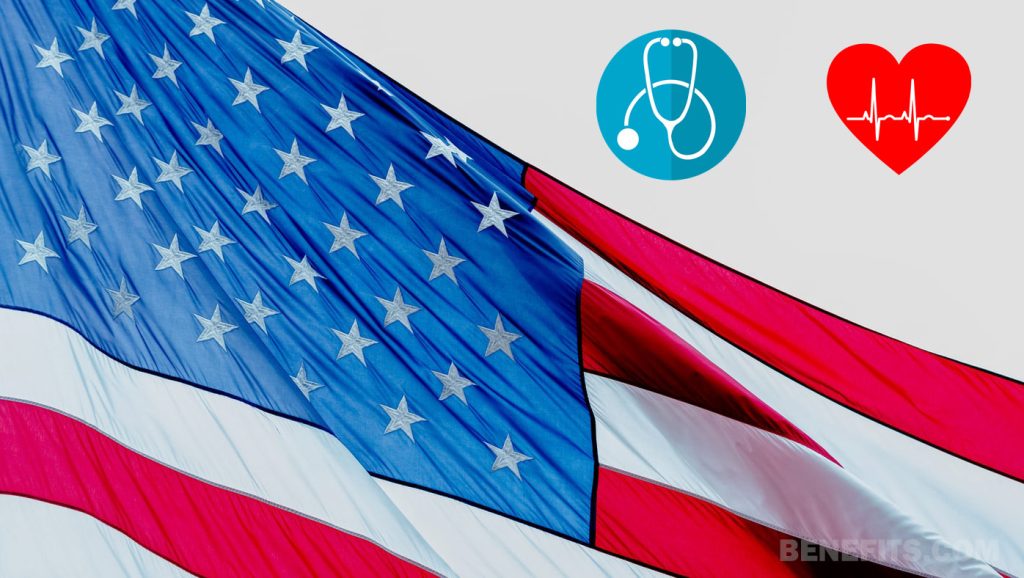Table of Contents
The Veterans Health Administration (VHA) is a comprehensive health care system serving veterans across the United States. The VHA coordinates services for past military service members through an integrated system of hospitals, facilities, and outpatient clinics. The administration runs several programs to help veterans access primary care, specialist care, and any medical support they may need.
10 Programs Managed by the Veterans Health Administration
- CHAMPVA
- VA Telehealth Services
- Foreign Medical Program (FMP)
- VISTA
- Tribal Health Program
- Pharmacy Benefits Management
- Compensated Work Therapy
- Spina Bifida
- Veterans Choice Program
- VA Voluntary Service
America’s veterans are in a unique position compared with their civilian counterparts. To support and respect the continued service these men and women give to our country, the U.S. government administers a number of assistance programs through the VA.
One major component of this is the VHA which provides an exceptional health system to veterans with the goal of meeting or exceeding the quality of care that private insurers provide. Veterans or family members of veterans should look into all the services the VHA provides since it is the nation’s largest health care system and accommodates the needs of America’s veterans.
What’s the Difference Between VA and VHA?
Many people often mix up the VA system and the VHA. The VA is short for the Department of Veterans Affairs. It can be helpful to think of it as an umbrella term that houses different administrations that serve veterans. Under the VA are three main programs: VHA, VBA (Veterans Benefits Administration), and NCA (National Cemetery Administration).
The VA is an executive-level department in the federal government and it oversees healthcare for veterans for their entire life and in many cases provides care for spouses and dependent children.
VHA focuses on the medical needs of veterans within the VA and oversees all healthcare, doctors, nurses, clinics, hospitals, and in and outpatient clinics.
VBA covers all non-health related benefits for veterans such as life insurance, home loans, pensions, and education.
NCA ensures that all veterans, spouses, and dependent children are offered a resting place in one of the VA’s national cemeteries.
Together, these programs help provide veterans benefits for over 4.5 million men and women who have served in our armed forces. The VHA is dedicated to helping all past service members including homeless veterans through community partnerships to provide housing, employment, and health care services.
To better manage VA care, the country is divided into 18 service areas known as the Veterans Integrated Services Networks (VISNs), including networks in Guam, The Philippines, and American Samoa. With this regional approach, the VA is better able to meet the specific needs of its members and improve patient care.
10 Programs Managed by the Veterans Health Administration
1. CHAMPVA
The Civilian Health and Medical Program of the Department of Veterans Affairs (CHAMPVA) provides VA health care benefits for surviving family members of veterans. CHAMPVA coverage works much like Medicare – recipients are required to pay deductibles and copays but they are not required to pay any premiums.
CHAMPVA benefits are available to surviving spouses or children of veterans who died in the line of duty, who have been deemed permanently disabled due to a service-related injury, or who have died as the result of a service-related injury. These beneficiaries are commonly referred to as Dependency and Indemnity Compensation (DIC) recipients.
It’s important to distinguish the CHAMPVA program from the Department of Defense (DoD) TRICARE program which was formerly called CHAMPUS (Civilian Health and Medical Program of the Uniformed Services.) This program is primarily for active duty service members and their families or retirees. The two programs are administered by completely different departments, and those in active duty are required to enroll in TRICARE. If you qualify for both services the default program you will use is TRICARE.
2. VA Telehealth Services
Starting in 2003, the VA began piloting a program to bring telehealth services to veterans across the country. It was one of the first adopters of telehealth when compared with private providers, recognizing early on that to reach all veterans and provide the best service, they needed to rethink the way they met the needs of their members. Since then, this program has expanded and is now serving nearly one million past service members and helping them receive care when they are unable to meet face-to-face with a health care provider in a VHA facility.
This service has been instrumental in helping provide veteran care during the Covid-19 pandemic by helping manage data, conduct video health care appointments, and connect veterans with medical devices that help them attain their health goals by tracking and storing patient data. Since the VA already had a robust telehealth system in place, they were better able to respond to the pandemic and support veteran patients remotely.
3. Foreign Medical Program (FMP)
The Foreign Medical Program (FMP) is specifically for eligible veterans with service-related disabilities who are living or traveling abroad. This program ensures that VHA recipients can access healthcare or other health-related services and products while overseas. Veterans wishing to use this program should notify the FMP if they plan to travel or move abroad, even if they’re not sure they can qualify for coverage.
The FMP works with international partners to connect veterans with VA-rated disabilities with home modification equipment, a local health care provider, or medications while abroad. It’s important to note that VA services overseas are not the same as they are domestically and the eligibility requirements for care are much stricter than they are in the states.
4. VISTA
VistA (the Veterans Health Information System Technology Architecture) is an imaging system helping the VHA to move away from paper records and images and into digital imaging for use in every VA hospital and clinic. VistA currently has one of the largest medical image repositories in the world, storing scans of documents, medical images, videos, and other non-text imagery.
Together with the VHA, VistA incorporates this data into the electronic health records of all VA beneficiaries to streamline and improve the quality of care.
5. Tribal Health Program
The Indian Health Services, or Tribal Health Program (IHS/THP) was started to provide better care to American Indian and Alaska Native (AI/AN) veterans. This is just one of many VA programs targeted to AI/AN veterans who represent a traditionally underserved population in the United States.
The primary goal of this program is to provide culturally responsive care for these veterans and connect them with services that are closer to their homes if visiting a VA facility is not practical. They do this by reimbursing costs paid to a local doctor or facility through an agreement with the Indian Health Service (IHS) and Tribal Health Programs (THP).
6. Pharmacy Benefits Management
Pharmacy Benefits Management (PBM) is the branch of the VHA that manages veterans’ medications. The PBM is responsible for more than simply filling prescriptions though. Its focus is on educating veterans and healthcare providers with the current best practices for appropriate pharmaceutical use for overall wellness, preventing and managing diseases, and ensuring the best health outcomes for all.
PBM supports and promotes the use of modern medicine, but also realizes afflictions like opioid use disorder plague veterans at a statistically higher rate than their civilian counterparts. One of the primary goals of the PBM is to prevent opioid addiction among veterans.
7. Compensated Work Therapy

Compensated Work Therapy (CWT) is a branch of the VHA’s vocational rehabilitation program that helps secure employment for veterans who struggle with physical or mental health difficulties. For many veterans, the effects of their time serving has had detrimental outcomes for their employment opportunities and the CWT works to level the playing field for them.
These services can be obtained within a local VA medical center and the providers work alongside the Vocational Rehabilitation and Employment Officer (VREO) to ensure veterans have the best chance of finding and maintaining employment. A CWT clinician can work with both current employees who may need help maintaining their job as well as unemployed veterans who need assistance getting back into the workplace.
8. Spina Bifida
The Spina Bifida Health Care Benefits Program (SBHCBP) is a specific program aimed at helping children of certain Korean War and Vietnam War veterans. During these wars, a chemical called Agent Orange was used to clear and control vegetation, but the horrific consequences of using this substance were not known until much later. Medical research has found a link between veterans who were exposed to Agent Orange during their service and their children later developing spina bifida. The SBHCBP provides healthcare benefits, vocational support or training, as well as monetary allowances to these children.
A similar service exists called the Children of Women Vietnam Veterans (CWVV) Health Care Benefits Program. This program does not provide all-encompassing health care coverage, rather it’s only for services related to a birth defect that is connected to female Vietnam veterans who have children with covered birth defects including spina bifida. Unlike the SBHCBP, enrollment for this program is first administered through the VBA.
9. Veterans Choice Program
Started in 2014, the Veterans Choice Program (VCP) offers veterans expanded care options by letting them choose a community provider if access to a VA provider is inconvenient due to wait times or distance. This generally means that you have a drive of more than 40 miles to get to a VA clinic, or if you have to wait more than 30 days to receive an appointment. There are other accommodations for those whose commute to a VA facility poses a significant burden on them. If you choose to use the VCP you will see no other changes in your coverage.
10. VA Voluntary Service
The VA’s Voluntary Service (VAVS) is made up of volunteers and donors and is an essential component of the VA. Civilians can offer to volunteer their time working in a medical facility run by the VA, at local vet centers, or a community-based outpatient clinic. The VAVS works by partnering with local organizations to ensure veterans and their families get the services they need.
Understanding the Veterans Health Administration
The VA was first implemented by President Lincoln at the end of the Civil War in 1865 (then called the National Home for Disabled Volunteer Soldiers), and it was the first national program of its kind to focus on the needs of former servicemen. It has since grown to include the departments of the VBA, NCA, and VHA and will continue to respond to the changing needs of veterans across the U.S.
The VHA provides a complete health system for veterans. Veterans and their family members can benefit from participating in the nation’s largest health care system. If you’re currently an active duty service member or a veteran of the United States armed forces, reach out to your local VA office or medical center today to see what programs you may qualify for.



